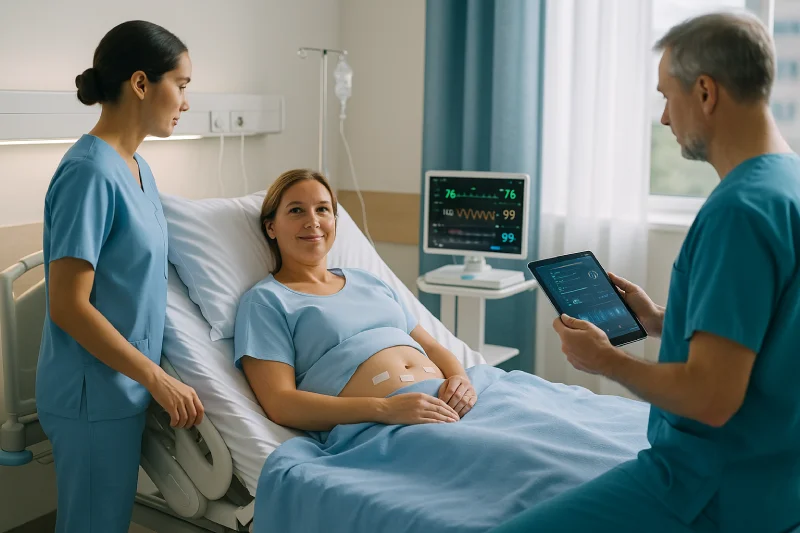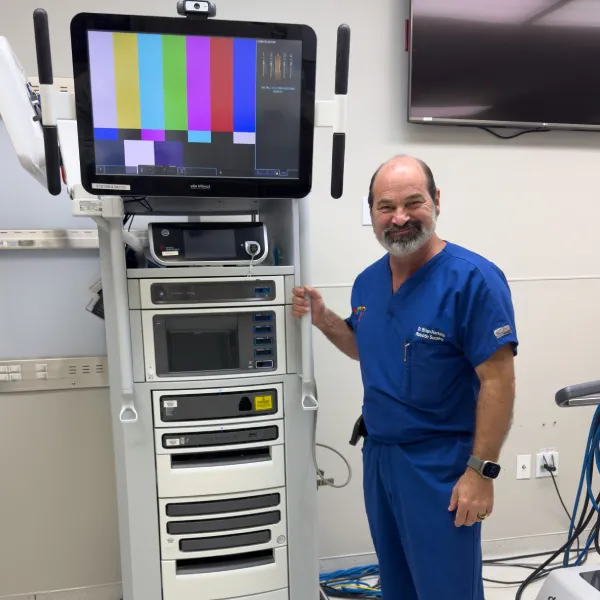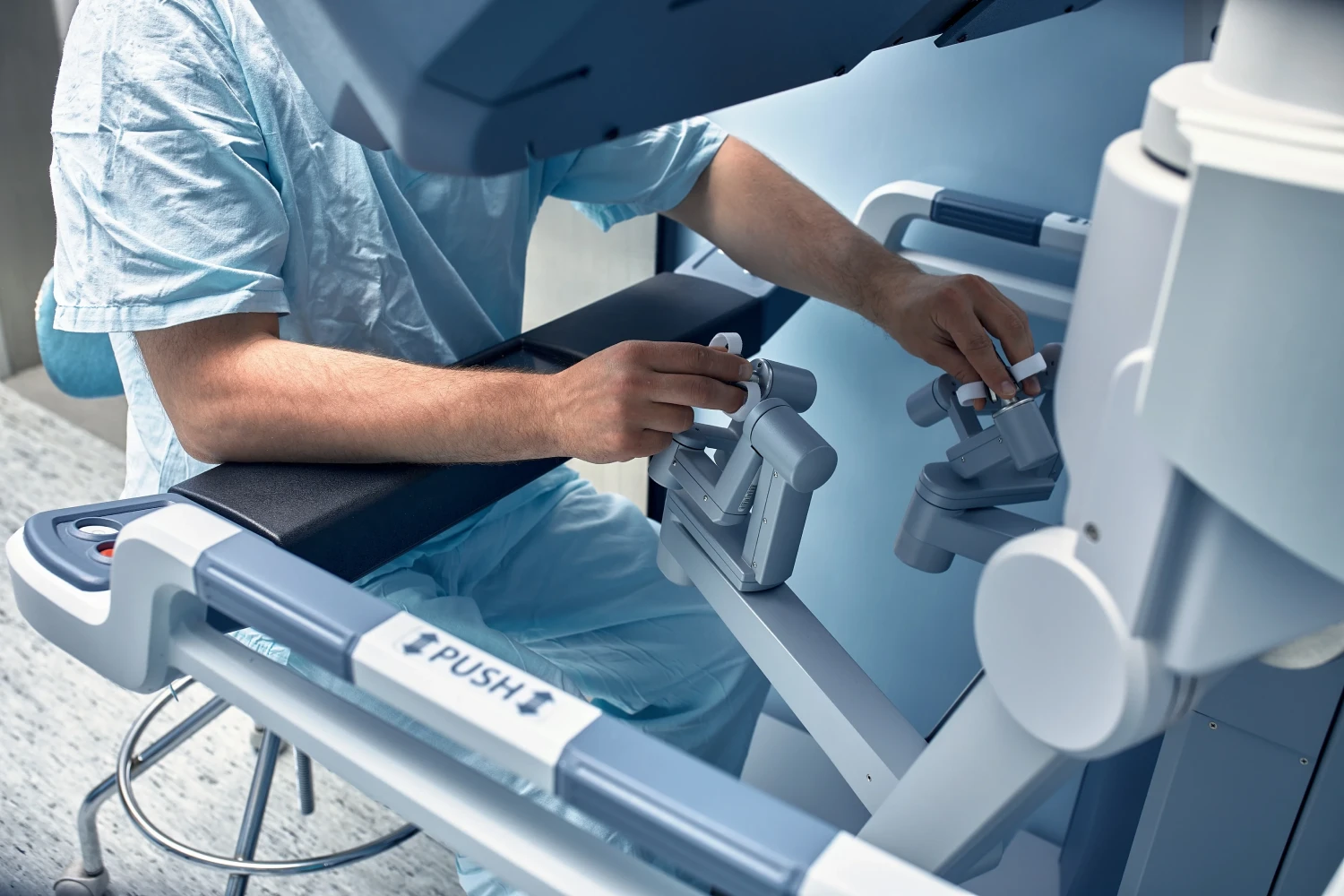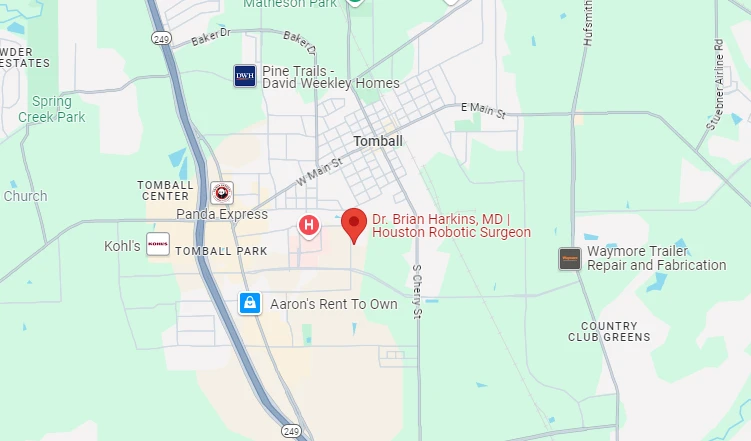
Low-pressure insufflation is a crucial advancement in minimally invasive surgery, particularly in robotic and laparoscopic procedures. This technique enhances patient comfort by significantly reducing postoperative pain and the need for analgesics. It allows for stable pneumoperitoneum, leading to improved surgical precision and efficiency. Patient outcomes benefit from shorter hospital stays and quicker recovery times. Ongoing research and innovations further support its role, while guidelines evolve to adopt these techniques. Uncover more about its impact on surgical practices.
While traditional insufflation methods have long been standard in surgical procedures, the benefits of low-pressure insufflation are increasingly recognized in the medical community. This approach enhances patient comfort by reducing postoperative pain and minimizing the need for extensive analgesic use. Additionally, low-pressure insufflation contributes to surgical precision, as it maintains a stable pneumoperitoneum, ensuring optimal visualization without compromising safety. Surgeons benefit from increased operational efficiency, as these systems allow for reduced procedural time and independent management of smoke evacuation. Importantly, studies indicate that lower insufflation pressures do not lead to increased complications, even in complex surgeries. Moreover, the implementation of low pressure insufflation can significantly improve patient outcomes and promote patient safety. Overall, the integration of low-pressure insufflation can significantly improve the quality of surgical care while enhancing the patient experience.
The clinical impact of low-pressure insufflation in minimally invasive surgery has been significant, particularly in reducing postoperative pain. Studies indicate that patients experience lower pain scores and a decreased reliance on analgesics, contributing to enhanced recovery. Moreover, these benefits are reflected in shortened hospital stays, underscoring the positive influence of low-pressure techniques on patient outcomes.
How can minimally invasive surgery (MIS) significantly enhance postoperative pain management and recovery outcomes? The implementation of low-pressure pneumoperitoneum (6–10 mmHg) during laparoscopic procedures has been shown to reduce postoperative pain intensity compared to higher pressures. Patients experience significantly lower pain scores at multiple intervals post-surgery, leading to decreased reliance on analgesics. This method not only improves patient satisfaction but also supports enhanced recovery by minimizing opioid use. A shift towards non-narcotic pain management in MIS further complements these benefits, resulting in substantial reductions in opioid prescriptions without compromising pain control. Overall, low-pressure insufflation techniques contribute positively to pain management strategies, enhancing patient recovery experiences and outcomes in minimally invasive surgical settings.
Minimally invasive surgery (MIS) has been shown to significantly reduce hospital stays, thereby enhancing overall patient outcomes. Lower insufflation pressures not only improve patient comfort but also maintain surgical efficiency. Studies indicate a notable reduction in hospital length of stay with low-pressure insufflation techniques, leading to quicker recovery times without compromising surgical quality.
| Insufflation Pressure | Hospital Stay (minutes) | Statistical Significance |
| High (≥ 10 mmHg) | 467 | p ≤ 0.001 |
| Medium (10-15 mmHg) | 449 | |
| Low (< 10 mmHg) | 317 | p = 0.01 |
This evidence suggests that adopting lower insufflation pressures in surgical protocols can optimize patient recovery and reduce healthcare costs, emphasizing the importance of standardizing these practices.
As advancements in surgical techniques continue to evolve, technical innovations in insufflation systems play a crucial role in enhancing patient outcomes and procedural efficiency. Recent developments in insufflation technology, such as intelligent turbine insufflation and systems like ConMed’s AirSeal, provide adaptive pressure control that responds to patient conditions. These innovations guarantee stable pneumoperitoneum and continuous smoke evacuation, significantly improving surgical visibility and conditions. The EVA15 insufflator exemplifies flexible pressure adjustment, automatically compensating for leaks and suctioning. In addition, real-time intra-cavitary pressure sensing optimizes gas delivery, reducing procedural time and enhancing overall surgical efficiency. The collaborative efforts between public-private partnerships are driving the industrialization of these advanced insufflation systems, promising additional improvements in minimally invasive surgery.
Maintaining optimal intraabdominal pressure and intraperitoneal pressure is essential for stable pneumoperitoneum in robotic-assisted radical and laparoscopic procedures. Advanced insufflation systems dynamically adjust pressure to enhance surgical conditions.
A growing body of research evaluates low pressure versus standard pressure insufflation. Pressure versus standard pressure pneumoperitoneum studies highlight reduced postoperative complications and enhanced recovery times.
New developments in insufflation pressures during gynecologic laparoscopy show that adjusting pressure pneumoperitoneum during laparoscopic cholecystectomy can improve surgical efficiency and patient safety.
Maintaining optimal intraabdominal pressure and intraperitoneal pressure is essential for stable pneumoperitoneum in robotic-assisted radical and laparoscopic procedures. Advanced insufflation systems dynamically adjust pressure to enhance surgical conditions.
A growing body of research evaluates low pressure versus standard pressure insufflation. Pressure versus standard pressure pneumoperitoneum studies highlight reduced postoperative complications and enhanced recovery times.
New developments in insufflation pressures during gynecologic laparoscopy show that adjusting pressure pneumoperitoneum during laparoscopic cholecystectomy can improve surgical efficiency and patient safety.
Recent advancements in insufflation systems have paved the way for the exploration of low-pressure techniques in minimally invasive surgery. Research highlights significant low pressure benefits, emphasizing improved patient outcomes and surgical efficiency. Comparative studies reveal that lower insufflation pressures correlate with reduced postoperative pain, shorter hospital stays, and decreased complications.
| Low-Pressure Benefits | Surgical Advancements |
| Reduced postoperative pain | Stable pneumoperitoneum |
| Shortened hospital stay | Increased operating efficiency |
| Faster return to normal activity | Better instrument control |
Systematic reviews and randomized controlled trials further support these findings, demonstrating that low-pressure pneumoperitoneum is both safe and effective, solidifying its role in modern surgical practices.
Studies on pain in low pressure versus high-pressure insufflation confirm that low pressure pneumoperitoneum results in less postoperative pain in transperitoneal procedures, especially in urologic surgeries.
A systematic review and meta-analysis underscores the impact of low-pressure pneumoperitoneum in reducing complications for pressure pneumoperitoneum in robotic-assisted surgeries.
Proper regulation of tip pain in low pressure insufflation has been found to significantly reduce postoperative shoulder tip pain, improving patient recovery.
While various surgical specialties have recognized the advantages of low-pressure insufflation in laparoscopic procedures, professional guidelines and recommendations continue to evolve. The European Association for Endoscopic Surgery emphasizes the importance of utilizing the lowest intra-abdominal pressure necessary for adequate surgical exposure, highlighting the guideline significance in enhancing patient outcomes. However, challenges remain, particularly within the gynecologic community, where no formal guidelines exist despite evidence supporting reduced postoperative pain. Institutions like UC Davis Health have successfully adopted low-pressure insufflation as a standard practice, demonstrating feasibility and improved clinical outcomes. As more specialties incorporate low-pressure techniques, ongoing research and standardized recommendations will be essential in addressing the recommendation challenges faced by varying surgical disciplines.
While standard pressure pneumoperitoneum in laparoscopic surgeries has been the norm, newer findings suggest low pressure versus high pressure techniques offer better patient outcomes with fewer complications.
Analyzing different insufflation pressures for laparoscopic surgeries has helped refine surgical guidelines. Comparisons between pressure and standard pressure pneumoperitoneum highlight the benefits of lower pressures.
Recent studies explore different insufflation pressures on liver function, with findings suggesting that insufflation pressures on liver functions may impact metabolic response and postoperative pain.
The evolution of professional guidelines in minimally invasive surgery sets the stage for future surgical practices that will increasingly employ advanced technologies. Next-generation surgical robots promise enhanced robotic versatility, promoting broader adoption of robot-assisted procedures. While surgical autonomy will advance through machine learning, complete autonomy remains unlikely in the near future. Innovations such as nano-robotics and advanced imaging techniques like virtual reality will reshape surgical training and planning, emphasizing prevention and early intervention. This shift will lead to improved patient outcomes, including reduced postoperative pain and shorter recovery times. Additionally, the integration of digital technologies in operating theatres will support local surgical delivery, enhancing collaboration within multidisciplinary teams and encouraging a more patient-centered approach to care.
The shift towards surgical conditions during low-pressure pneumoperitoneum continues to refine operating room efficiency and enhance patient outcomes in robotic-assisted procedures.
As robotic surgery advances, the use of low pressure pneumoperitoneum in robotic techniques is becoming more prevalent. Pressure pneumoperitoneum in robotic-assisted surgeries ensures superior precision and reduced recovery time.
Recent findings support low-pressure pneumoperitoneum during laparoscopic procedures as a method for reducing postoperative complications. Pressure pneumoperitoneum during laparoscopic cholecystectomy is now being reevaluated to optimize patient recovery.
The implementation of low-pressure insufflation in minimally invasive surgeries presents significant cost savings for healthcare systems. By reducing hospital length of stay and minimizing postoperative complications, resource utilization is enhanced, leading to improved operational efficiency. These economic benefits highlight the importance of adopting standardized practices in surgical procedures.
Significant reductions in hospital expenses are achievable through the implementation of minimally invasive surgical techniques, particularly those utilizing low-pressure insufflation systems. By facilitating shorter hospital stays, these procedures not only decrease healthcare costs but also enhance patient satisfaction. Financial analysis indicates that reduced postoperative complications and pain lead to less reliance on opioids, further minimizing expenses related to pain management. Furthermore, efficient surgical practices enabled by low-pressure systems allow for increased patient throughput, optimizing resource utilization. Consequently, the adoption of low-pressure insufflation not only improves recovery times but also strategically alleviates the economic burden on healthcare institutions. Overall, these factors collectively support a persuasive case for the cost-effectiveness of low-pressure insufflation in surgical settings.
Minimally invasive surgery utilizing low-pressure insufflation systems demonstrates notable improvements in resource utilization, translating into enhanced cost-effectiveness and better healthcare outcomes. By shortening procedural times and maintaining a stable pneumoperitoneum, these systems optimize surgical workflow, allowing for efficient resource allocation within the operating room. The preservation of optimal exposure at lower pressures enhances visibility, further streamlining procedures. Consequently, shorter recovery times lead to quicker patient turnover, preventing bottlenecks in recovery areas and facilitating more effective patient care. Additionally, lower postoperative pain scores and reduced hospital stays contribute to decreased healthcare costs. The widespread adoption of low-pressure insufflation practices suggests significant implications for improving overall surgical efficiency and patient outcomes in healthcare settings.
In summary, the adoption of low-pressure insufflation in robotic and laparoscopic surgeries offers significant benefits, enhancing patient comfort and improving clinical outcomes. Supported by research and innovative technologies, this technique aligns with professional guidelines advocating for patient-centered approaches. As healthcare continues to evolve, Dr. Brian Harkins remains committed to integrating low-pressure insufflation into surgical practices, ensuring superior patient care, cost-effectiveness, and the continued advancement of minimally invasive surgery.
Pneumoperitoneum in laparoscopic cholecystectomy creates space within the abdomen by insufflating carbon dioxide (CO₂), allowing surgeons to perform the procedure with minimal incisions. The pressure level used during pneumoperitoneum for laparoscopic cholecystectomy can impact surgical outcomes, recovery time, and pain after laparoscopic cholecystectomy. Studies suggest that low-pressure pneumoperitoneum in laparoscopic cholecystectomy can reduce postoperative discomfort while maintaining surgical efficiency.
Intra-abdominal pressure levels directly affect pain following laparoscopic procedures and overall recovery. High pressure can lead to increased shoulder pain and a higher risk of complications, while low intra-abdominal pressure is associated with less postoperative pain and faster healing. Adjusting insufflation pressure should be used carefully to balance patient safety and surgical visibility.
The effect of pneumoperitoneum on renal function is a critical consideration in both laparoscopic colorectal surgery and robotic-assisted radical prostatectomy. Increased pneumoperitoneum pressure can reduce renal perfusion, leading to temporary kidney impairment. Using low-pressure pneumoperitoneum in robotic and laparoscopic procedures can help mitigate these risks while preserving kidney function.
Yes, low-pressure pneumoperitoneum in colorectal surgery has been shown to improve patient outcomes. A systematic review and meta-analysis of surgical techniques indicate that low-pressure versus standard-pressure pneumoperitoneum can reduce postoperative pain and improve recovery times without compromising surgical precision.
The effects of different insufflation pressures play a significant role in patient comfort. A prospective randomized trial of postoperative pain found that low-pressure versus high-pressure insufflation leads to less postoperative pain and quicker recovery. Moreover, a randomized trial of postoperative pain following robotic and laparoscopic donor nephrectomy supports the use of low-pressure capnoperitoneum during laparoscopic cholecystectomy to minimize discomfort.
During laparoscopic hysterectomy, pneumoperitoneum for laparoscopic surgery is used to create an optimal surgical field. Studies comparing low pressure and standard pressure suggest that conditions during low-pressure insufflation lead to reduced postoperative pain in transperitoneal laparoscopic gynecologic procedures, making recovery smoother for patients.
In robotic-assisted radical prostatectomy, low-pressure versus standard-pressure pneumoperitoneum has been linked to a lower risk of shoulder tip pain in low insufflation settings. This adjustment enhances patient recovery while maintaining clear visualization for the surgeon.
The pressure during laparoscopic cholecystectomy should balance surgical efficacy with patient safety. Research suggests that low-pressure pneumoperitoneum during laparoscopic cholecystectomy at a pressure of 15 mmHg or lower results in less postoperative pain compared to standard pneumoperitoneum pressure. A trial of postoperative pain following laparoscopic procedures has demonstrated that different insufflation pressures significantly affect patient comfort.
Yes, shoulder pain following laparoscopic cholecystectomy is often caused by CO₂ retention from pneumoperitoneum for laparoscopic surgery. Adjusting to low-pressure versus standard pressure pneumoperitoneum has been proven to minimize post-operative shoulder tip pain, improving patient recovery.
Extensive evidence for the use of low-pressure pneumoperitoneum in robotic and laparoscopic procedures suggests that it provides superior patient comfort, faster recovery, and fewer complications. Various standard-pressure and low-pressure pneumoperitoneum studies, including insufflation pressures for laparoscopic cholecystectomy, support the transition to low-pressure pneumoperitoneum for improved surgical outcomes.



Dr. Brian Harkins is a renowned surgeon specializing in advanced, minimally invasive, and robotic surgical techniques. With a dedication to innovation and personalized patient care, he has transformed countless lives by delivering exceptional outcomes.

I want a website like this, where do i start?